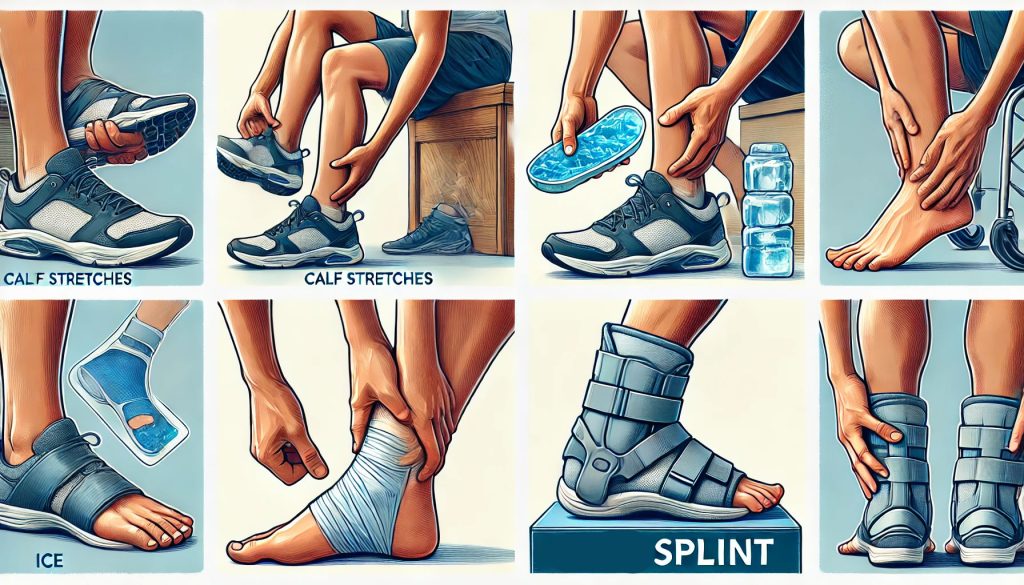No matter what I try, the pain from my plantar fasciitis just won't go away. Every morning it feels like I'm walking on glass. – Michael Thompson
Plantar fasciitis is a common and often debilitating foot condition that affects millions of people worldwide. The NIH (National Institute of Health) studies show that plantar fasciitis is one of the most common causes of heel pain and has been estimated to affect about 2 million people in the US, resulting in more than 1 million visits to both primary care physicians and foot specialists.
Plantar fasciitis is characterized by pain and inflammation of the plantar fascia, a thick band of tissue that runs across the bottom of your foot, connecting your heel bone to your toes.
While many individuals find relief through conventional treatments, some continue to suffer from persistent pain despite their best efforts.
We’ll dive into what to do when plantar fasciitis won’t go away, exploring advanced treatment options and emphasizing the role of stretching techniques and tools like calf stretchers.
What causes plantar fasciitis?
Before addressing persistent plantar fasciitis, it’s essential to understand its causes. Plantar fasciitis often results from repetitive strain or overuse, leading to microtears in the plantar fascia. Common risk factors include:
- Overpronation: Excessive inward rolling of the foot while walking or running.
- High Arches or Flat Feet: Abnormal foot structures can strain the plantar fascia.
- Improper Footwear: Shoes lacking adequate support or cushioning.
- Obesity: Extra weight increases pressure on the plantar fascia.
- Prolonged Standing or Walking: Particularly on hard surfaces.
- Age: Plantar fasciitis is more common in middle-aged and older adults.
- Athletic Activity: High-impact sports can overburden the plantar fascia.

Common treatments for plantar fasciitis
Most cases of plantar fasciitis respond well to conservative treatments. While we always recommend to consult your physician first, there are some home treatments you can do today that can help.
- Rest and Ice: Reducing physical activity and applying ice to the affected area can help reduce inflammation and pain.
- Stretching Exercises: Calf stretches, Achilles tendon stretches, and plantar fascia stretches can alleviate tension and promote healing. Tools like a slant board for calf stretching (browse Amazon) is a popular go-to option, while providing a number of other health and injury prevention benefits.
- Orthotic Inserts: Custom or over-the-counter shoe inserts can provide support and relieve pressure on the plantar fascia.
- Physical Therapy: Therapists often use a combination of manual therapy, stretching, and strengthening exercises.
- Pain Relief Medications: Nonsteroidal anti-inflammatory drugs (NSAIDs) can help manage pain and inflammation.
- Night Splints: These devices keep the foot in a dorsiflexed position overnight, stretching the plantar fascia and Achilles tendon.
- Supportive Footwear: Shoes with good arch support and cushioning are crucial.

When plantar fasciitis won’t go away
Despite adhering to these treatments, some individuals continue to experience persistent plantar fasciitis. When this happens, it’s essential to explore additional options. But remember, always consult a doctor a physician first as this does not constitute medical advice.
Advanced Stretching Tools: Incline Boards or Slant Boards
Incline boards, or slant boards, is a popular treatment method recommended by physical therapists as an effective tool for stretching the plantar fascia and calf muscles. These tools can easily be used at home, in the office, gym or the clinic.
These boards allow users to stretch at various angles, targeting the specific areas that contribute to plantar fasciitis, as well as offer a multitude of other benefits as stretching other fasciitis and tendons in the calf and foot, while improving your balance, mobility and flexibility and promoting good blood circulation (necessary to keep your body and organs healthy). Physical therapists often recommend them because they offer controlled, consistent stretching that can significantly improve flexibility and reduce pain.
Subtle shifts in stretching techniques using a slant board can target the plantar fascia more precisely than traditional stretches. Many athletes and older adults have found relief through regular use of these tools, as they facilitate deeper and more effective stretches.
Extracorporeal Shock Wave Therapy (ESWT)
ESWT is a non-invasive treatment that uses sound waves to stimulate healing in the plantar fascia. It is typically considered when other conservative treatments have failed. The therapy promotes blood flow and tissue regeneration, potentially reducing pain and inflammation.
Corticosteroid Injections
In some cases, corticosteroid injections may be administered to reduce severe inflammation and pain. However, this is generally considered a temporary solution and is not recommended for long-term use due to potential side effects. Always consult a doctor a physician first. This does not constitute medical advice.
Platelet-Rich Plasma (PRP) Therapy
PRP therapy involves injecting a concentrated solution of the patient’s own platelets into the affected area. The growth factors in the platelets promote healing and tissue repair. While still under investigation, PRP has shown promise in treating chronic plantar fasciitis.
Surgery
Surgery is considered a last resort when all other treatments have failed. The most common surgical procedure for plantar fasciitis is plantar fascia release, which involves cutting a portion of the plantar fascia to relieve tension. Recovery from surgery can be lengthy, and it is typically only recommended for severe, unresponsive cases.

Does plantar fasciitis ever heal completely?
Many individuals with plantar fasciitis experience significant improvement with proper treatment. However, the healing process can be slow, often taking several months. Persistent or chronic cases may take longer to resolve, and some people may experience occasional flare-ups. Maintaining a consistent routine of stretching, strengthening, and supportive footwear is essential to prevent recurrence.
When plantar fasciitis won’t go away, it can be frustrating and debilitating. However, there are several advanced treatment options available for those who do not respond to conventional methods. Stretching tools like incline boards or slant boards can be particularly effective, offering targeted and controlled stretching that can alleviate pain and improve flexibility. Other treatments, such as ESWT, PRP therapy, and in rare cases, surgery, may also be necessary for persistent cases.
By understanding the underlying causes of plantar fasciitis and exploring these advanced treatment options, individuals can find relief and regain their quality of life. Always consult with a healthcare professional before starting any new treatment to ensure it is appropriate for your specific condition. With patience and persistence, even the most stubborn cases of plantar fasciitis can be managed effectively.







